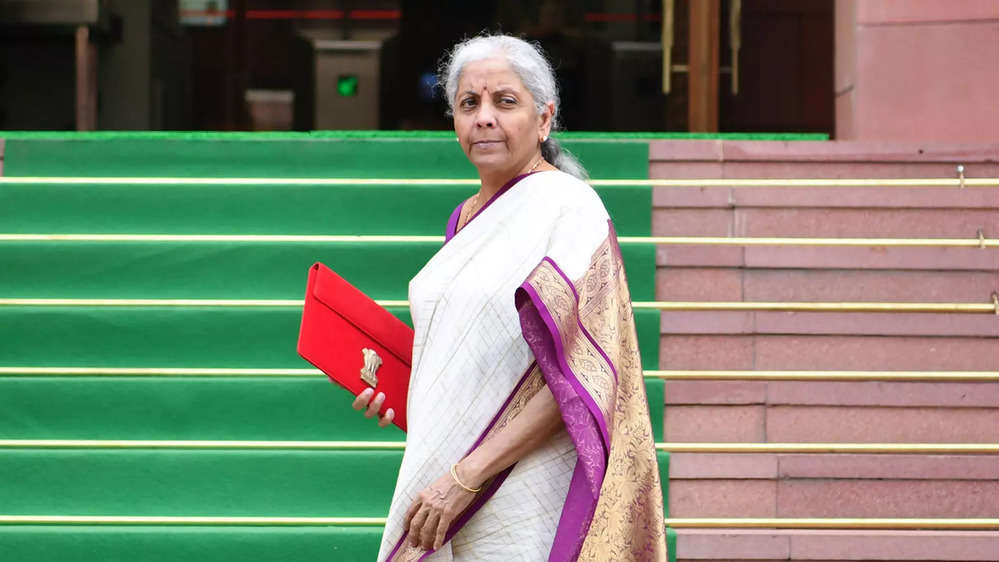When an economy excels, so can its finance minister, with budgetary aplomb. Riding on the winds of 8.2% gross domestic product (GDP) growth, a continuing boom in tax receipts and a bumper dividend from the Reserve Bank of India (RBI), Nirmala Sitharaman has killed several birds — political and economic — with one stone. Well done.
Politically, this is a “government bachao” budget. Critics earlier speculated that if Nitish Kumar of Bihar and Chandrababu Naidu of Andhra Pradesh were not mollified by the Bharatiya Janata Party (
BJP), they might bring down the government. The
budget showers the two states with massive funds that should satisfy them for the time being, even though it falls short of their demand for special category status.
In policy terms, this is a “more of the same” budget. It contains no radical reforms. Why rock the boat when GDP growth is already excellent? Medium-term policy stability is the budget’s unspoken message.
In economic terms, the budget is a macroeconomic dream come true. The budgeted fiscal deficit is down from 5.9% of GDP last year to 4.9% this year, a cut so sharp that many countries under International Monetary Fund (IMF) discipline would have difficulty achieving it.
Yet Sitharaman has managed to do so while boasting of infrastructure capital expenditure (capex) of 3.4% of GDP, satisfying political allies, funding schemes to spur employment and tourism, and providing income tax relief to cheer the government’s middle-class backers.
The long-term capital gains tax has been raised from 10% to 12.5% but remains far below the US level of 20%.
Indexation to inflation for real estate capital gains has been abolished and that will make investment in equities relatively more attractive.
Budget 2024: From tax slab changes to jobs creation, top 10 highlights from FM Sitharaman speech
The securities transactions tax on futures and options has been raised to 0.02% and 0.1% respectively, while the short-term capital gains tax on some assets has been raised from 15% to 20%. This will claw back some of the revenue lost through reduced taxes on income and capital gains.
Moralists argue that such changes will encourage long-term investment and discourage short-term speculation. Free marketeers will complain that a market system is incomplete without futures and options, which should not be treated as sins to be taxed heavily (like cigarettes or spirits). What some decry as “speculation” is better called “providing liquidity to aid price discovery”.
Buybacks will now be taxed as dividends in the hands of shareholders. This is a logical way of plugging a tax-avoidance gap.
The angel tax has been abolished for all categories, a boost for startups. But it is not with retrospective effect, something the industry had demanded.
For branches of foreign firms, affecting mainly the banking and shipping sectors, the corporate tax rate has been cut from 40% to 35%. This is a logical though delayed follow-up to the cutting of corporate tax for Indian subsidiaries of multinational companies some years ago.
Protectionism has, alas, been rising in recent budgets. But this time Sitharaman has cut many import duties too, a welcome change in emphasis. Tax benefits that are supposed to be temporary too often become permanent crutches for uncompetitive industries. But with the maturing of the cellphone industry, the duty on competing imports has been cut from 20% to 15%.
The import duty on gold and silver has been cut to 6%. This is long overdue, since high import duties have boosted smuggling and money laundering. Hopefully these will now shrink.
Budget 2024: From Mobiles To Gold & Silver: What Got Cheaper & What Got Expensive? | Tax Changes
Unemployment continues to be a political hot button. The budget provides employment-linked incentives to employers and first-time employees.
The government will reimburse employers up to ₹3,000 per month for 2 years towards their Employees Provident Fund liability. Sitharaman estimates this will incentivise the employment of 5mn. Really? Why will employers hire persons they do not otherwise need for a tiny subsidy?
Again, why does Sitharaman think that an incentive of one month’s wage to first-time employees in the formal sector will help a whopping 21mn youths? They need no subsidy since they are desperate for formal-sector jobs anyway, but cannot get them.
Another scheme, subsidising both employers and employees, is estimated to help 30 lakh youths in manufacturing industries. These figures are all pies in the sky.
Sitharaman’s internship proposals are welcome, but a very partial answer to the problem of skilling. India is full of graduates from third-rate colleges with degrees but no real skills. They do not want blue-collar jobs and are unfit for white-collar jobs.
Meanwhile, companies complain of a shortage of good STEM (science, technology, engineering, maths) graduates. India needs an upgrading of its entire rotten educational system, and that will take decades.
Budget 2024: How it impacts your finances | A simplified guide
The political outlays in the budget are welcome since they are fully justified on economic grounds alone.
Amaravati needs to be built in fair if not full measure in the next five years to give Andhra Pradesh its new capital. The eastern region is poorly developed and needs the infrastructure projects proposed in the budget.
Tourism has huge potential, so upgrading the Buddhist-Jain circuit of Bodh Gaya, Nalanda and Rajgir is much-needed. Indeed, the tourist circuit needs to be extended to Vaishali and Lumbini, Buddha’s birthplace.
Flood protection measures for Bihar — as well as Assam, Uttarakhand and Himachal Pradesh — are important nationally, not just regionally.
As for direct taxes, the higher standard deduction will benefit 40mn salaried individuals and pensioners. The income tax slabs have been adjusted upward, but do little more than compensate for inflation over the past five years. The net revenue forgone in direct and indirect taxes is only ₹7,000 crore. This has helped conserve funds for higher capex.
Sitharaman’s list of “next-generation reforms” is disappointing. The list is long but adds up to little more than vague good intentions and promises of future action. The Mumbai-Ahmedabad bullet train, a project close to the prime minister’s heart, has not taken off after 10 years because of land acquisition problems.
Sitharaman offers no solutions. This is just one example of “next-generation reforms” that India needs but are not on Sitharaman’s list. They remain politically too difficult to contemplate in a “more of the same” budget.


